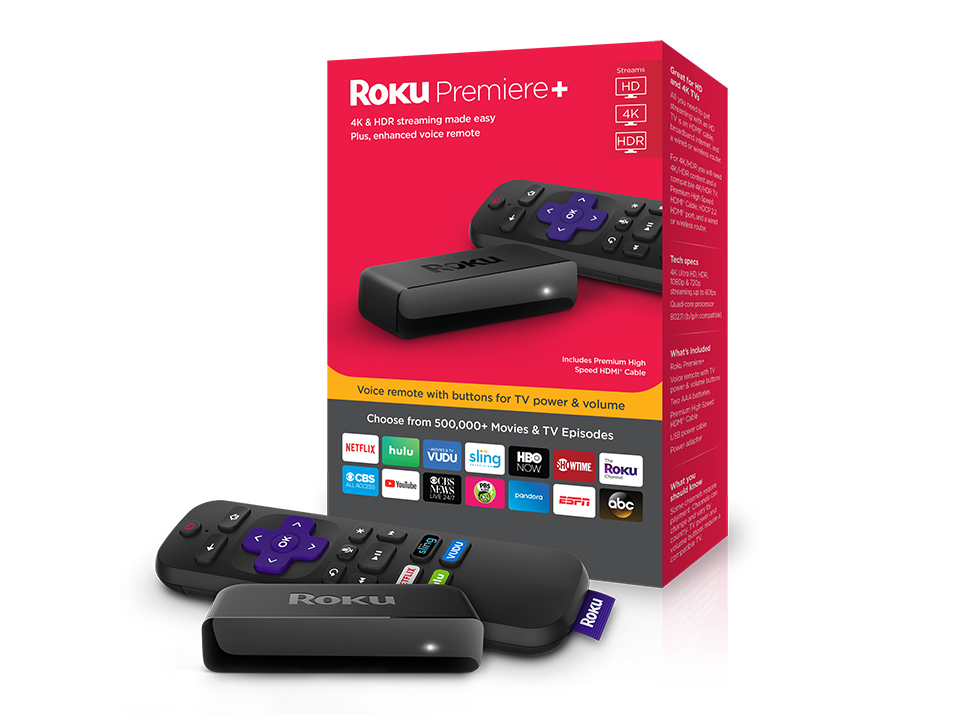When it comes to over-the-top television — using internet-based streaming services and options to watch TV instead of traditional pay-television providers — few companies recently have been as over the top as Roku.
In the past 13 months, Roku has gone beyond producing its namesake streaming TV boxes and sticks to launching the Roku Channel, which gives viewers access to a repository of free, ad-supported movies and TV shows, which Roku has obtained through studio-licensing deals. The company has struck deals with 11 different TV brands to make Roku TVs, which are built using the Roku operating system as the “brains” of the TV. Roku also offers its own app as an option that can be downloaded and used on a number of smart TVs, eliminating the need for a Roku device to watch its TV offerings.

“For us, it’s always about celebrating your TV experience,” said Scott Rosenberg, vice president and general manager of Roku’s platform business. “We are a company that is laser-focused on solving what the future of TV is going to look like.”
Roku certainly seems intent on being at the forefront of that future.
For starters, the company’s streaming products are among the most well-known and popular in the market for set-top devices that are used to watch everything from free content providers, such as Sony’s Crackle, and the kingpin of streaming, Netflix.
For the moment, Netflix happens to be Roku’s next door neighbor at its headquarters building in Los Gatos. However, thanks in large part to Roku’s rapid growth, that location is about to change.
Earlier this year, Roku signed a lease for 472,000 square feet of office space located in the Coleman Highline office and retail complex on the border of San Jose and Santa Clara. With approximately 1,000 employees, the majority of whom are in Los Gatos, the company will begin moving into the new digs next year in a two-phase plan that is scheduled to be completed by 2020. Currently, Roku has about 100 open job positions listed for Los Gatos on the company’s career site.
“They do have big plans and are somewhat well positioned to go for it,” said Gartner analyst Fernando Elizalde, who covers Roku.
Those plans involve a multi-angled approach to streaming TV content that starts by keeping Roku rooted in what has worked well for it — producing hardware gadgets.
In September, Roku moved to cement its position in the streaming TV device market with the release of Roku Premiere, a $39.99 device for streaming 4K HDR programming, making it the least-expensive 4K streaming device on the current market. It also offers access to thousands of streaming services on its Roku devices, including Netflix, Hulu, Amazon Prime, YouTube, CBS All Access, NBC, ABC and many more.
Roku doesn’t disclose exact numbers of sales for its streaming media players but instead relies on what it calls “active accounts” — the number of accounts that have used Roku over a 30-day period — as a measure of the popularity of its products and services. Roku reported 22 million active accounts when it delivered its second-quarter earnings results in August, a 46 percent increase over the same period in 2017.
“The way that many people have gained access to streaming is thanks to Roku,” said KeyBank analyst Evan Wingren. “They have 22 million active accounts, which makes them bigger than DirecTV and almost as big as Charter (Communications). The point is that they are one of the main conduits for streaming TV viewing in the U.S.”
While that provides a strong foundation for the company, Rosenberg said Roku can’t rely on these products alone if it wants to remain relevant and a leader in the streaming TV industry. Some of the other biggest device suppliers on the market — Amazon with Fire, Google with Chromecast and Apple with Apple TV — have diverse offerings. Which is why Roku has branched out into areas beyond the set-top box.
Perhaps the most notable of such efforts has been the launch of Roku TV in 2014, with an updated version in 2017 — smart televisions with a built-in Roku operating system. The company has lined up the likes of Insignia, Philips and TCL, among the 11 TV brands, to sell Roku TVs. Roku TVs can cost as little as $130 for a 28-inch screen model up to $2,300 for a 75-inch 4K HDR TV.
Rosenberg estimated that about 25 percent of the smart TVs sold in the U.S. during the first half of the year had Roku technology built in. That doesn’t mean the company will dial back its focus on its other streaming products.
“The Roku sticks and boxes are not going away. There’s still a big market for those products,” Rosenberg said. “Maybe you have a TV you bought a few years ago. The TV is fine, but you want a better smart TV solution. We have a streaming stick for you in that case. But, if you’re going to buy a new piece of glass (TV) to last you six or seven years, hopefully you’ll buy a Roku TV, and we are the solution for you.”
Roku also has entered the business of being a one-stop conduit for viewers to find programming. Launched in 2017, the Roku Channel is a free service that lets people search for and watch movies and TV shows from content providers that have licensing agreements with Roku, including Lionsgate, MGM and Paramount. The company earns money from the Roku Channel by selling commercial ads on the service.
The Roku Channel gets competition from other popular free streaming TV services, such as Cackle, Pluto TV and Tubi TV. Currently, the Roku Channel can be watched on Roku streaming devices, mobile phones, tablets and PCs and certain Samsung smart TVs.
And Roku now has a distinction no other streaming technology company can claim, said Colin Dixon, chief analyst of nScreenMedia.
“I’ve never seen anyone go from being a consumer electronics provider to being a (streaming) service provider,” Dixon said. “There are only so many streaming services people will subscribe to, and Roku knows that people will be willing to see a few ads if they can watch something for free. They’ve recognized a very good opportunity for them.”
And those opportunities also have helped to make Roku a hit on Wall Street.
Since Roku shares started trading last September at $15.78, Roku’s stock price has surged by more than 250 percent, to around $55 a share. In its most-recent earnings report, from Aug. 8, Roku broke even on a per-share basis and recorded sales of $156.8 million. During the same period in 2017, Roku lost $3.18 a share, on revenue of $99.6 billion.
Driving those results is the company’s shift toward emphasizing revenue from its platform business, which includes licensing deals, ad sales and a cut of services that customers subscribe to from their Roku devices. Roku’s revenue from some items totaled $90.3 million during the quarter, almost double from a year ago. Sales of Roku players climbed 24 percent, to $66.5 million.
“They are continuing to do more things to open up their total potential customer market,” said Laura Martin, an analyst that covers Roku for Needham & Co. “If you have an over-the-top service, you need to be on Roku. They’ve gotten too big to ignore.”










